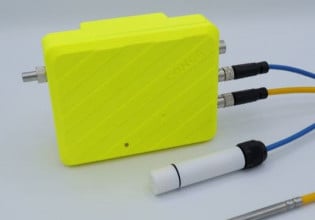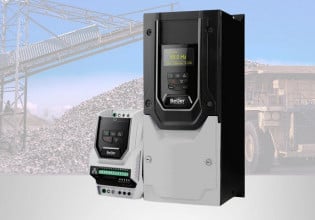Understanding Airflow in Industrial Systems
This article explores the role of airflow measurement, the sensors and calibrators used, and airflow's importance in an industrial setting for proper environmental control.
Airflow measurement measures the amount of air flowing through a specific area, which could be a room, a section of pipe, a duct, or any other passage specifically made for airflow. Airflow commonly expresses in the unit feet per minute (FPM) or cubic feet per minute (CFM). CFM is air velocity multiplied by the duct’s area by the air velocity flowing through a particular passage.

Figure 1. Airflow happens through a series of pipes and ducts on a scale from single rooms to whole factories. Image courtesy of Peter H.
Sensors are placed throughout the areas where air flows. As the air flows through the sensing media, it generates electronic signals. These signals, after necessary conditioning, convert to a form measurable and usable by the main controller or PLC. The controller or PLC performs desired actions according to the algorithm.

Figure 2. Airflow sensors read the air flowing through the system and relay the information back to the controller or PLC. Image courtesy of Newark.
The air or environment plays a necessary role in many manufacturing industries, including food and beverage. Controlling different parameters, such as the air’s temperature and humidity, is the basic requirement. For this and other regulatory requirements, proper airflow measurement is a critical process. Expert personnel maintain dedicated instruments and carry out these measurements.
Importance of Air Flow Measurements
The environment control techniques employed in industrial applications depend significantly on the feedback from air monitoring devices. The quality of readings performed by these devices and instruments notably impact the environmental control method’s efficiency. For this purpose, almost all industries and their regulatory bodies pay special attention to the airflow measuring techniques. Some areas of application for airflow measuring techniques are:
- Heating Ventilation and Air Conditioning (HVAC)
- Manufacturing processes
- Cleanrooms and isolators
- Water systems
- Compressed air systems
Heating Ventilation and Air Conditioning (HVAC)
HVAC systems provide the building’s required environmental conditions. These conditions depend on the specific type of industry, product, and process happening in different areas of the factory. The HVAC system uses airflow measurements to identify the airflow direction between rooms and the amount of air entering and leaving a particular area.
This controlled amount of air, as a result of airflow measurements HAVC systems restricts the flow of air from one area to another by developing different pressure level patterns. These are necessary for sterile or aseptic environments to stop the un-filtered air.
Another relevant application for which HVAC systems use the airflow measuring devices is to detect any leakage in the air supply network or a room, by monitoring the airflow readings. In addition, automatic adjustment of the required temperature is also performed, if there is any deviation from the required temperature.
HVAC also uses airflow measurement techniques for the flowrate’s automatic adjustment. The main controller continuously monitors the airflow readings. If there is any change in the airflow pattern, then the main controller sends a signal to the motor controller or Variable Frequency Drive (VFD) to fill the gap.
Manufacturing Processes
Different industries use airflow measurements in their manufacturing processes When air or other gasses pass through a product, changes occur from the flow of gas or air that helps to determine the product quality.
For example, in a fluid bed dryer, heated air passes through the mixture of powdered products to dry them. The flow of heated air is monitored, as over or under heating ruin the product.
Cleanrooms and Isolators
Cleanroom and isolators are two different concepts, but their main application is the same: to provide the highest level of purified environmental conditions. This controlled environment is necessary for different sophisticated products, and they are also often used in laboratory testing.

Figure 3. Air filters for cleanrooms and isolators must stay calibrated to very specific requirements to ensure product quality. Image courtesy of Bronkhurst.
To accomplish this, they isolate the area and provide clean air through the use of a filter. Isolators and cleanrooms use flow measurement systems to control and regulate the flow of air. This is necessary to make the filtration effective and meet the specific product requirement. They also serve to monitor and detect the dirty air and prevent it from entering the clean environment.
Water Systems
Water is a critical raw material for many industries such as food, beverages, and different life sciences industries, and it must be purified according to the regulatory requirements of that industry. To obtain this level of purification, water treatment plants are installed for purified and distilled water.
Nowadays, most devices used in water treatment plants are pneumatic for easier use. Contamination control is one of many reasons for its utilization. Airflow measurements use the flow of air in these systems to monitor any decrease or shortage of supply of air causing the pneumatic systems to work erratically. Also, the main controller uses the feedback of these monitoring systems to alert the system in case of a shortage of air.
Compressed Air Systems
Airflow measurements are an essential part of the compressed air system. Without it, the compressor systems can be challenging to manage according to their needs and requirements. These compressor systems use airflow measurements to monitor the flow of air through the attached network, and it gives information about the amount of air that is being used throughout it. These readings indicate valuable information about the requirement for further compressors. They also help with air distribution to many points of use.






